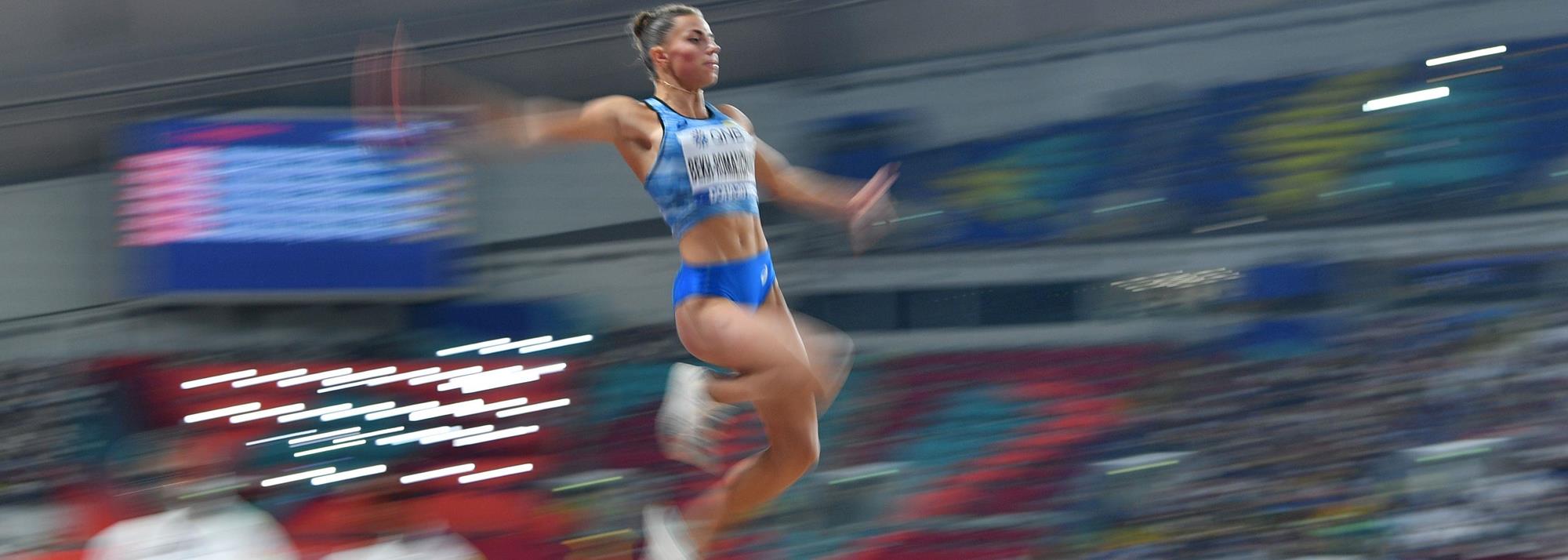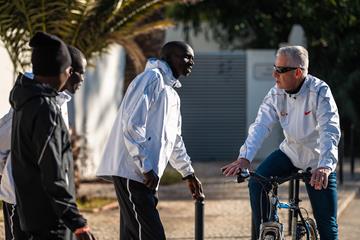To coincide with the publication of the 2020 edition of the World Athletics Competition & Technical Rules book, we have summarised the key rule changes that have been made in the two years since the 2018 edition of the rules book was published.
Most of these rule changes were approved by the World Athletics Council at meetings in 2018 and 2019 and were introduced from 1 November 2019, and published in the digital version of the Book of Rules at that time. Area and Member Federations are notified of all rule changes directly after the Council meeting at which the decision is made.
One of the significant rule changes that will come into force on 1 November 2021 is with the way take-off fouls are judged in long and triple jumps.
Currently, a no-jump is called if an athlete is judged, while taking off, to have touched the ground beyond the take-off line. A plasticine board set at an angle of 45° has been long used to assist with such decisions. Under the new Technical Rule (number 30.1.1), it will be a failure on take-off if any part of the take-off shoe or foot breaks the vertical plane of the take-off line. It was felt that this would be more understandable and simpler to judge. The old rule occasionally allowed toecaps to visibly broach the line without marking plasticine. In the future, such moments are to be fouls and the plasticine board, if used, is to be set at 90°.
The change was due to be enforced from 1 November 2020 but in view of this year’s exceptional circumstances – and particularly because of the postponement of the Olympic Games to 2021 – it has been delayed for one year.
Summary of recent rule modifications
Rules have been re-numbered as noted in the Book of Rules section under Tables of Rule References, so that for instance the false start clause which was associated with number 162 is now under Technical Rule 16. A detailed list of the most familiar rules relating to disqualifications is given in the associated PDF file.
A summary of the more significant rule changes is listed below. These are in addition to more recent rule amendments regarding shoe technology (within Technical Rule 5.2) as first reported here and subsequently in the Technical Information section's Manuals & Guidelines section with regularly updated shoe compliance lists.
- Technical Rule 1 (was IAAF rule 100) – World Championships and Olympic Games no longer excluded from competitions where events may be held in an alternative format
- TR 3.1 (was 141.1) – The under-18 category descriptors boys and girls are replaced with men and women
- TR 3.3-4 (was 141.4-6) – Eligibility for men’s, women’s and universal categories is elaborated with further references to the terms transgender and differences in sex development
- TR 5.1 (was 143.1) – It is no longer required that vests should have the same colour on the front and back; It is noted that the way hair is worn may be regarded as impeding the judge’s view
- TR 6.4.7-8 (was 144.4) – Physical support by designated individuals and pacing by lights or similar added to list of allowable assistances
- TR 8.4.4 (was 146.4.d) – Any protest of a non-finishing athlete or relay team is to be dismissed if they commit a rule breach unrelated to that protest
- TR 9.2 (was 147.2) – The acceptable conduct of mixed competition in field events and stadium races of 5000m or longer is elaborated
- TR 17.6 (was 163.6) – It is clarified that relay runners who correctly leave and return to the track while retrieving a baton (under TR 24.6.3) are not to be disqualified
- TR 17.15.3 (was 163.15.c) – Athletes in track races may carry water or refreshment providing it was there from the start or supplied at an official station
- TR 19.18 (was 165.18) – Timing systems operating automatically at the start but not the finish are prohibited
- TR 20.8 (was 166.8) – It is recommended that in races longer than 800m where rounds are conducted, the number of athletes qualifying by time (as opposed to place) should be minimised
- TR 23.5 (was 169.5) – The steeplechase barrier height for under-18 men is lowered from 0.914m to 0.838m
- TR 25.17 (was 180.17) – The time allowed for trials across all field events, with more than three athletes competing (or for their very first trial), is again one minute (as was the case prior to 2017)
- TR 30.1.1 (was 185.1) – (From 1 November 2021) – Horizontal jump take-off failures shall be re-defined to include any breaking of the vertical plane of the take-off line. Rule 29.5 (was 184.5) strongly encourages the use of video or technology to assist with such judgements. It further specifies that a plasticine indicator board may be used, and that this should be set at an angle of 90° rather than the previous 45°
- TR 32.2 (was 187.2) – The number of implements submitted by an athlete in a throwing event is limited to two, unless the technical delegate decides otherwise
- TR 39 (was 200) – It is clarified that heptathlons and decathlons may be held on two consecutive 24-hour periods rather than two consecutive days, therefore allowing for situations where a contest may continue after midnight. The same applies to indoor heptathlons under TR 53.2 (was 223.2)
- TR 54.7 (was 230.7) – In race walks, the term “pit lane” is renamed “penalty zone”
- TR 56.3.2 (was 250.3.b) – The required length of the “unhampered” run at the start of cross country races is reduced from 1500m to 300m
- TR 57 (was 251 & 252) – The previous rules are replaced with a new and single one covering both mountain and trail running
- Competition Rule 32 (was 261) – The 20,000m, 25,000m and 30,000m are deleted from the list of events for which world records are recognised
Separate Competition and Technical Rule downloads (plus updates) are also available in the Library. From the Library, select Constitution & Book of Rules, then Book C: Competition. This is where any rule amendments agreed at Council Meetings will be first posted, the most recent being the deferment of the amendment to rule 30.1.1.
Mark Butler for World Athletics







 Countdown
Countdown





